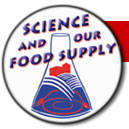|

Ancient Greeks and others used to think that sickness was caused by the weather, but now it’s known that germs are the cause of disease.
Few germs are harmful. For example, some are used in vaccines to protect people from getting sick, and the E. coli bacterium (not the O157:H7 variety) is a normal resident of our small intestine that enables our bodies to create vitamin K and aids in digestion.
Every day our bodies make about one billion new "defender" cells to help fight disease-causing germs.
|
|
List of Terms: G
(Return to Comprehensive List of Terms)
> Gene
A unit of hereditary information that occupies a fixed position on a chromosome. Almost all genes are composed of deoxyribonucleic acid (DNA), except in the case of some viruses, whose genes are made of a closely related compound called ribonucleic acid (RNA).
> Genetic Engineering (see Biotechnology)
> Genus (singular) or Genera (plural)
A biological classification ranking between family and species, consisting of a group of closely related species, which differ from one another in only slight characteristics. The first name of a bacterium is called the genus. (Also see Binomial Nomenclature
and Species.)
> Germ
Any microorganism that cannot be seen with the naked eye. Germs include bacteria, viruses, fungi, algae, and protozoa.
Food Safety Implication: The kitchen, bathroom, laundry room - any place that provides a warm, moist environment - is an ideal place for germs to live. They can pass from surface to surface and even from your hands to your food.
Food Safety Precautions:
- Wash your hands thoroughly with hot, soapy water before and after you prepare food and after you use the bathroom, change diapers, handle pets, cough, sneeze, or blow your nose.
- Consider using durable, disposable paper towels instead of dishcloths or sponges, which can harbor bacteria. Throw away the paper towels (and the germs) after you have finished cleaning, and wash dishcloths frequently in the hot cycle of your washing machine.
> Good Agricultural Practices (GAPs)
General guidance provided by the Food and Drug Administration that is used to direct domestic and international food producers in growing, harvesting, sorting, packing, and storage operations to reduce microbial food safety hazards.
> Good Manufacturing Practices (GMPs)
Guidance that provides criteria for complying with provisions of the Federal Food, Drug, and Cosmetic Act, which requires that all human foods be free from adulteration (impurities). These regulations form the basis of production and preparation of safe food and include criteria for disease control, cleanliness (personal hygiene and dress codes), education, and training.
|


